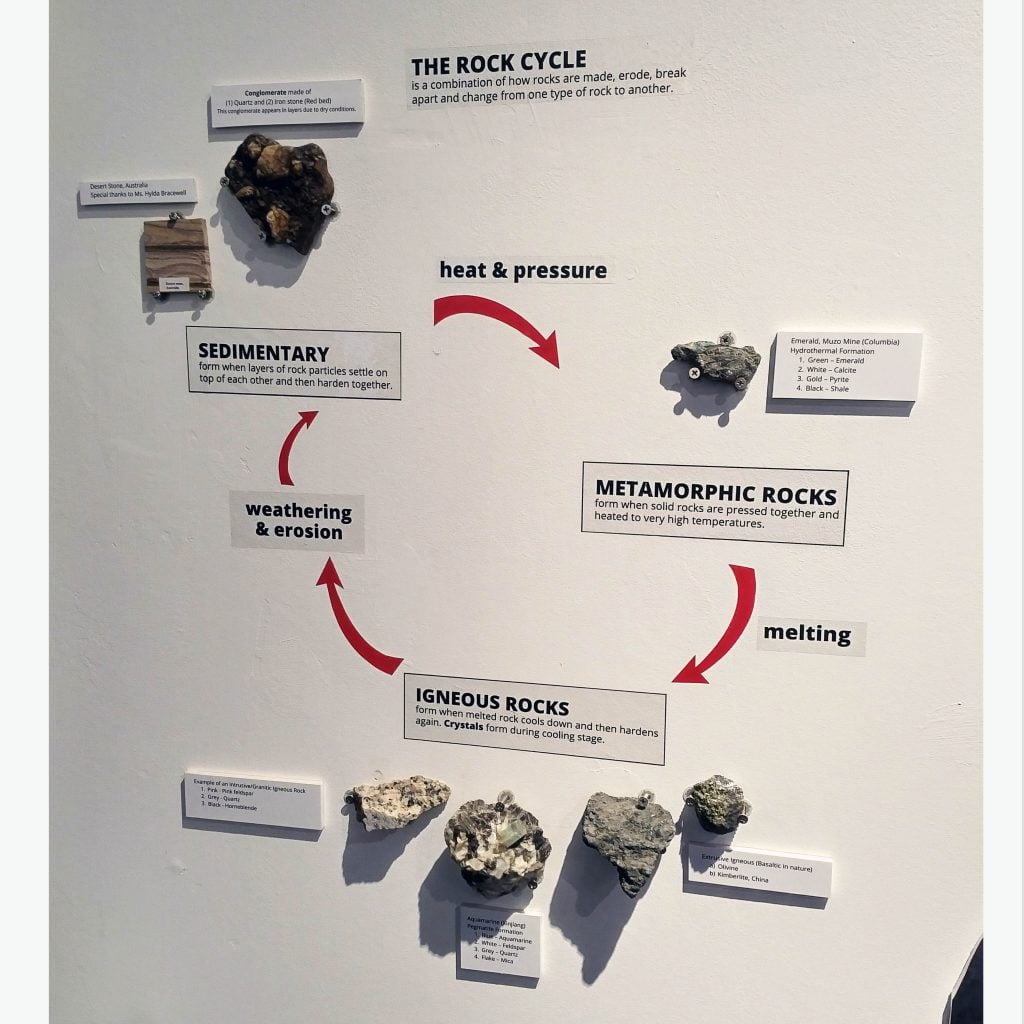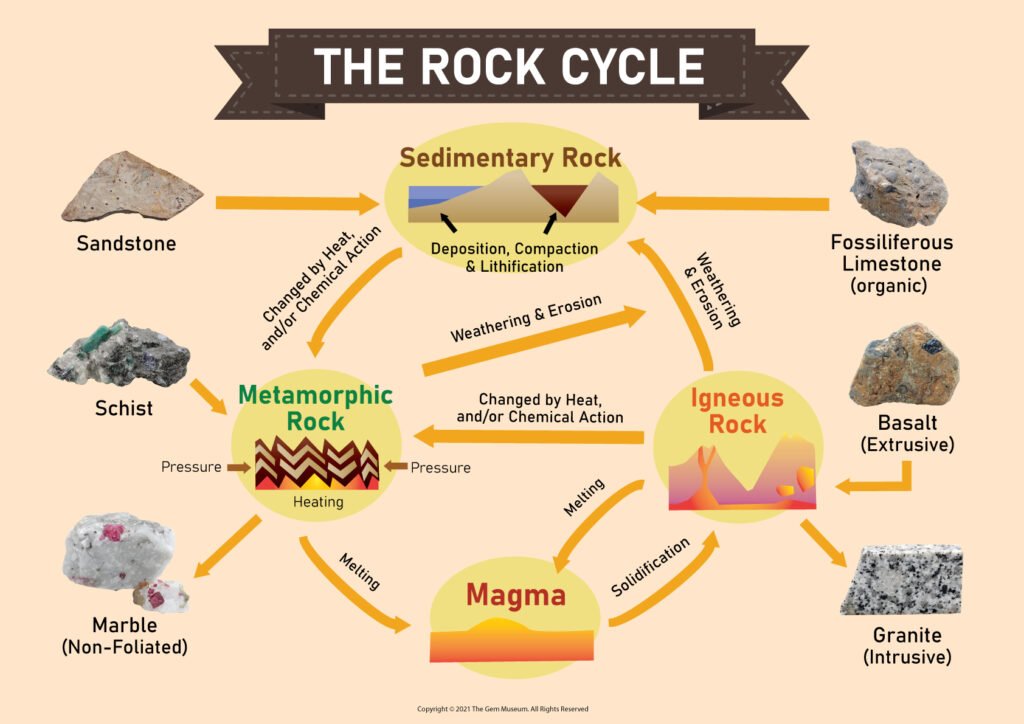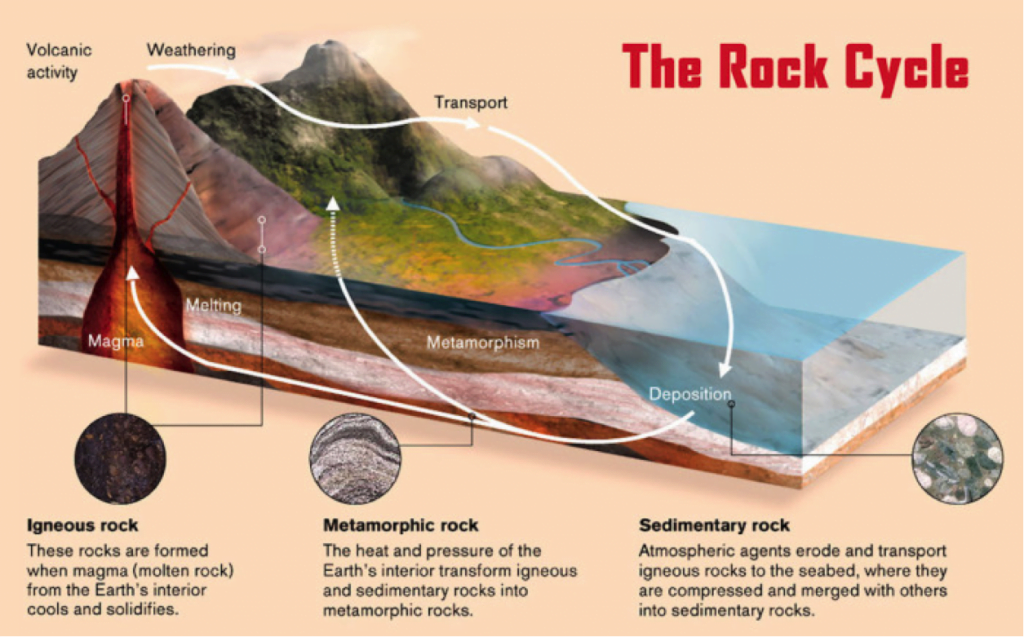The Rock Cycle
All rocks are made up of minerals. The rock cycle explains the process.
A mineral is defined as a naturally occurring, crystalline solid of definite chemical composition and a characteristic crystal structure.
A rock is any naturally formed, nonliving, firm, and coherent aggregate mass of solid matter that constitutes part of a planet.
(Diagram and description taken from Idaho Museum of Natural History)
(Diagram from Infohow.org)
Igneous rock
Igneous rock is formed when magma from the mantle rises up through the Earth’s crust, and cools and solidifies; or when lava on the Earth’s surface cools and solidifies. Igneous rocks are primarily created with heat.
Found in igneous rock: The quartzes (including amethyst, citrine and ametrine), the garnets, moonstone, apatite, diamond, spinel, tanzanite, tourmaline, topaz and zircon.
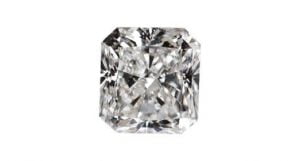
Metamorphic rock
Metamorphic rock is formed when intense underground heat or pressure alters the existing atomic structures of minerals within rocks, and transforms them into other minerals. In essence, metamorphic rocks are created when heat and pressure change existing minerals into something new.
Found in Metamorphic rock: The beryls (emerald, morganite and aquamarine), jade, lapis lazuli, turquoise, spinel, ruby, sapphire, alexandrite, chrysoberyl and zircon.


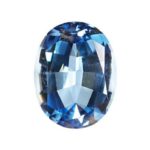



Sedimentary rock
Sedimentary rock is formed when rock is worn down and the fragments are carried by water or the wind, and these sediments are finally compressed together over time.
Found in Sedimentary rock: Jasper, malachite, opal and zircon
The Gem Museum presents The Rock Cycle
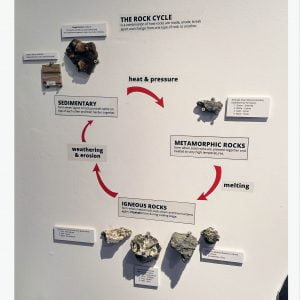
Here are some 3D rendering of rock specimen:
Igneous Rocks:
- Feldspar
- Aquamarine
Sedimentary Rock:
- Conglomerate
The Gem Museum is set up to educate visitors on the story of “Mine to Market”. The very beginning of understanding gemstones is to learn about the rock cycle that is a very essential part of the formation of gemstones.
Come and visit us if you are in Singapore! We are opened Tuesday to Friday, 12pm to 5pm; Saturday 11am to 3pm. Register your visiting timeslot here. Admission is free!
References / Further reading:
What is the Rock Cycle? – Idaho Museum of Natural History
Gem formation – International Gem Society
Where did those gemstones come from – ThermoFisher Scientific

